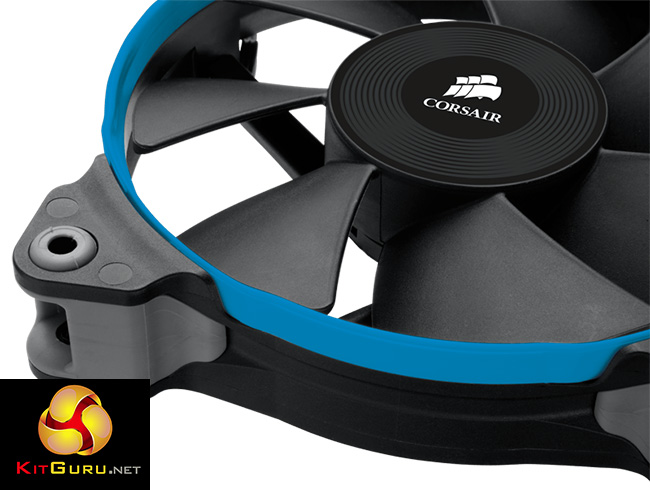Just like when I saw the final results from my fan configuration testing, I must confess to be being very surprised by the results shown on the previous page.
If you have skipped ahead, here are the results in a nutshell – the SP120s improved the temperature result by no more than 2 degrees. In fact, the difference was a single degree when using the Cooler Master Hyper 212 LED.
Of course, this test does not conclusively prove that static pressure fans are barely any better than airflow models – we would need to test every possible hardware combination in the world to do that, which is simply not humanly possible. Nonetheless, each of our tests were carried out in a scientific way – so the results cannot lie.
I would offer a couple of potential explanations for this small performance difference, though.
For one, and this is actually something I mentioned in the last article about fan configurations, neither cooler on test today is overly large or bulky. This means air does not encounter significant amounts of resistance when passing through each cooler – at least not when compared with something like Alphacool's Monsta line of radiators. As such, using an airflow-optimised fan makes less of a difference since it can still push the required amount of air through the cooler to keep temperatures in check.
Another potential explanation is fan speed. I did keep all the fans in the system spinning at 50%, just to stop any interference via the motherboard's PWM controller. I would suspect at a lower fan speed, the static pressure models would open up a bigger performance gap between their airflow counterparts as they can push air at a higher pressure. It is likely that at 50% fan speed, the airflow fans are still capable of pushing enough air to cool the heatsink/radiator, but this may not be the case at a lower rpm.
As always, though, those are just my theories which are not confirmed by any means. I would have to conduct further testing before being able to categorically explain the similarity of the results we have seen today.
Those explanations aside, what we do know for certain is that for my testing, the difference was very small – almost negligible. As such, I would conclude that if you are using airflow fans on a radiator or heatsink, in all likelihood they are doing the job just fine. Furthermore, if you see an airflow fan that you think would look amazing on a radiator or heatsink, even if that is not its intended purpose, it should still be able to do the job with no issues.
KitGuru says: Are any of you guys using airflow fans on a radiator or heatsink? Sound off in the comments and let us know what model of fan you are using and how it performs for you. If you have any more theories as to why the performance difference between the SP and AF fans was so small, let us know in the comments as well.
 KitGuru KitGuru.net – Tech News | Hardware News | Hardware Reviews | IOS | Mobile | Gaming | Graphics Cards
KitGuru KitGuru.net – Tech News | Hardware News | Hardware Reviews | IOS | Mobile | Gaming | Graphics Cards




I needed to do some searching to find out what the issue really was. It sounded like a static pressure fan pushed, while an airflow fan pulled, from the article. But, in fact, a static pressure fan moves a smaller amount of air under a high pressure, while an airflow fan moves a larger amount of air under a lower pressure. This is basically the fluid equivalent of matching the impedance in an electrical circuit. So while there may be situations where it doesn’t matter too much, in general using the right kind of fan will mean more of the input energy is transferred to useful work for your purpose.
it all lies in the design of the fan (number and shape of the blades, the motor can be the same in both “Airflow” and “static pressure” fans) and on the different curve that it provides…
for example let’s take this graph: https://i.ytimg.com/vi/fiJeOLkLV5I/maxresdefault.jpg
an “airflow” fan would have a curve like the 007, whilst a “static pressure” one will have a more steep curve like the 008… the steeper the curve the more it will counter the resistance in the circuit… this also means that the airflow fan WILL NOT ALWAYS MOVE MORE AIR than a static pressure one…
it’s a bit of a long lecture if I’d have to explain the physics behind this thoroughly, so I’ll stop here…
I’ve made $84 ,000 at this point sometime this year working on line moreover I’m a full time student . I’m by making use of a web business marketing opportunity I heard of and even I’ve made such type of good money . It is actually extremely simple to use not to mention I am just so happy that I found out about that . The possibility with this is end-less . Here’s what I do>>>
SECURE37.COM
I’ve earned $84 ,000 at this point this season working online moreover I’m a full time college student . I’m benefiting from a home based business money making opportunity I heard of and additionally I’ve made this kind of decent earnings . It is undoubtedly user-friendly and I am just very satisfied that I discovered out about it . The possibility with this is long-term . Here’s everything that I do>>>
SECURE37.COM
Think the gap between the fins and perhaps length of fin is the deciding factor.
Decent gap-any fan will push air thru.
Narrow gap-static pressure may be beneficial…………..
Interesting….
I didn’t even know there was 2 different type of fans 😛
I’ve used both kinds in push/pull on AIOs exhausting out of the back of midsized ATX cases, and haven’t noticed much of a difference in temps either at idle or under load. The BIG thing I’ve noticed is the loudness of included fans. Like this H80i V2, which I think came with SP-120’s sounded like an SR-71 taking off from idle to heavy load. I replaced them with Noctuas and now they don’t make a peep, but there’s no real diff in temps. May be the Nocs are slightly cooler. I would have been more interested to see a test switching out regular AF case fans with SP’s to see if the internals get hotter. Or even tests with cheap good fans (like CM’s SickleFlow 120’s versus the more expensive Nocs) to see the outcome. But good article! I was surprised, but as someone else said – perhaps you should also have tried it on really big block performance aircoolers. Thanks!
sure thing, the gap will influence the hydraulic diameter… the bigger the gap, the bigger the hydraulic diameter and the lesser the head loss.
read my other comment for some more info…
I have sp fans and AF fans on my PC. I use the SP for going through mesh/grates/heatsink. I too have noticed little difference it term of ability to cool. I have noticed though that the SP are way quieter by moving slower but cool just the same. My 2 AF are at the front and the back, 140 front stock 120 on back. I use one SP for the front as well and really does about the same amount of air movement. I just swapped my 212 evos stock fan, it died, with a Corsair SP120. Same temps but quite and better looking.
“It is likely that at 50% fan speed, the airflow fans are still capable of pushing enough air to cool the heatsink/radiator, but this may not be the case at a lower rpm.”
Yet you didn’t test that. What a shame.
i have a H105 and a bequiet dark rock pro – and swapped the fans. My 4770k goes as high as 85 degrees in benchmark at 4,4ghz with the H105, and the bequiet keeps my 2600k at 86 degrees, overclocked to 5.0 ghz. So the fans did make a huge difference on the aircooler, and a exponential growth in noise. The 105 is still enough while being completely silent